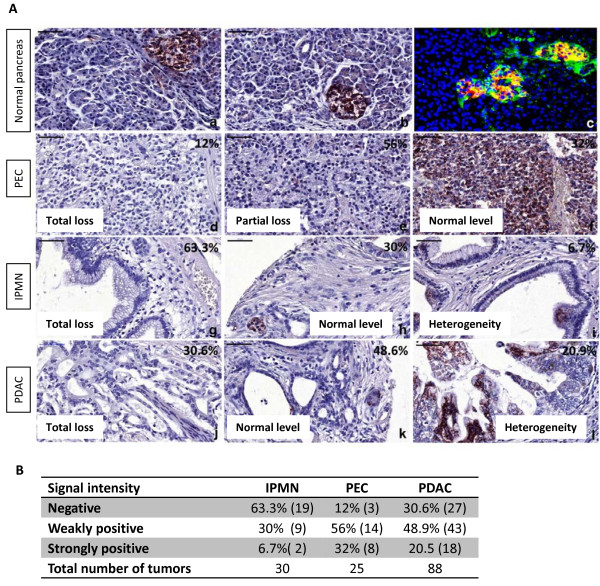Figure 5.
FGFR3 expression in normal and pancreatic tumor tissues. A: (a, b) FGFR3 signal was found in islets of normal pancreas. (c) Co-localization of FGFR3 (green) and insulin (red). Nuclei were stained with DAPI (blue). (d-l) FGFR3 expression was assessed according to the signal obtained in normal pancreas (strong in islets, weak in the exocrine tissue). Twelve percent of pancreatic endocrine carcinomas (PEC, n = 25) displayed no FGFR3 signal (d), 56% showed weak (e) and only 32% had strong (normal, f) FGFR3 expression. For Intraductal papillary mucinous neoplasms (IPMN, n = 30), 63.3% had no signal (g), 30% had weak signal (normal, h) and 6.7% showed strong (i) FGFR3 expression. In Pancreatic ductal adenocarcinomas (PDAC, n = 88), 30.6% displayed no FGFR3 signal (j), 48.9% had weak (normal, k) and 20.5% showed strong (l) FGFR3 expression. Bars represent 50 μm. B: Table recapitulating the scoring of pancreatic tumors for FGFR3 signal. Strong signals were as intense as signals obtained in normal pancreatic islets (A: a, b). Weak signals were similar to what was observed in normal pancreatic exocrine tissue (ducts and acinar cells, A: a, b).

